
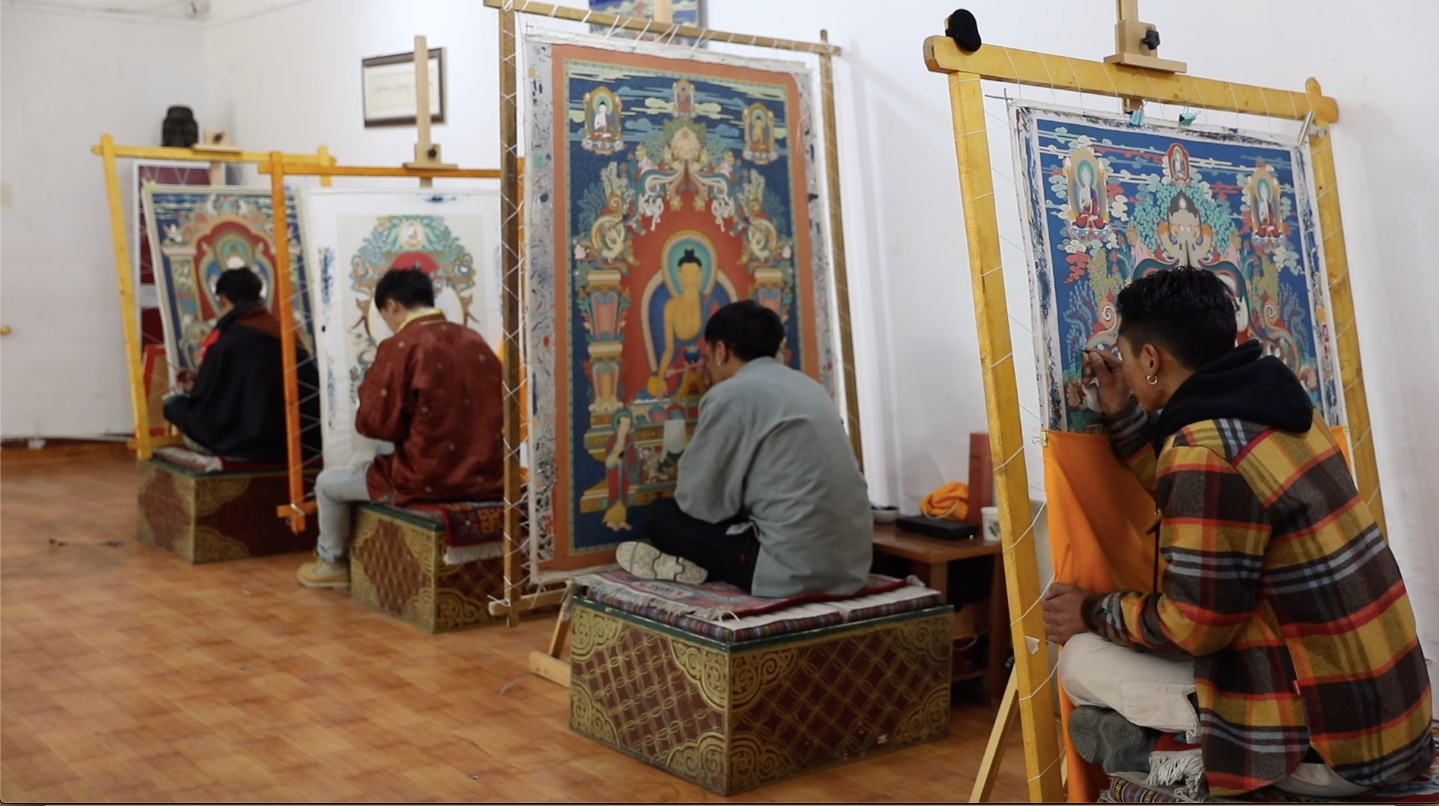
Twenty-year-old Romand Gangtse from Nakchu Prefecture of Tibet Autonomous Region has learnt how to make copper Buddha statues in a training school in Lhasa for more than three years, a traditional craft he is determined to devote to his whole life.
“Few people are learning this technique today, and I am quite interested in it. That’s why I come here,” said Gangtse. “I hope the craft passed down from our ancestors doesn’t disappear someday.”
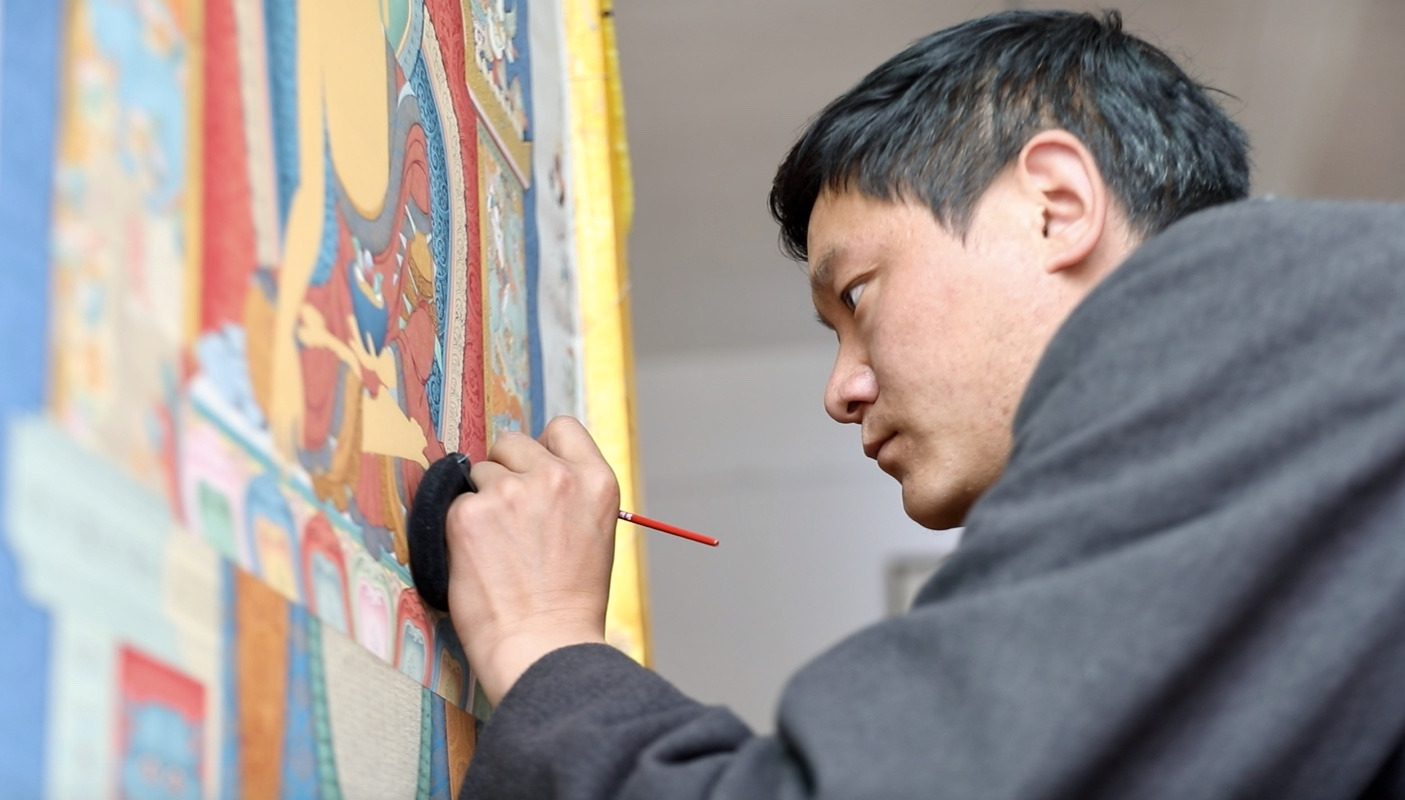
Romand Gangtse from Nakchu Prefecture of Tibet Autonomous Region learns the technique of making copper Buddha statues at a training school in Lhasa. /CGTN Photo
Founded in 2010, the school is named after the official organization that gathered the best craftsmen in ancient Tibet – Shoel Duphel, or Xuduibai in Mandarin Chinese. It provides training in diverse traditional handicrafts, including Thangka painting, woodblock printing and Tibetan incense making, among others. Many of them have been placed on Tibet’s intangible cultural heritage list.
“I just wanted to preserve some valuable ethnic handicrafts that were dying out,” Song Ming, founder of the school, told CGTN, adding that the school is trying to adopt a special teaching method.
“We try to combine the academic teaching style of college with the apprenticeship of traditional workshops, to cultivate the trainees and turn them into skillful craftsmen or even artists,” said Song, who used to be an art teacher in college.
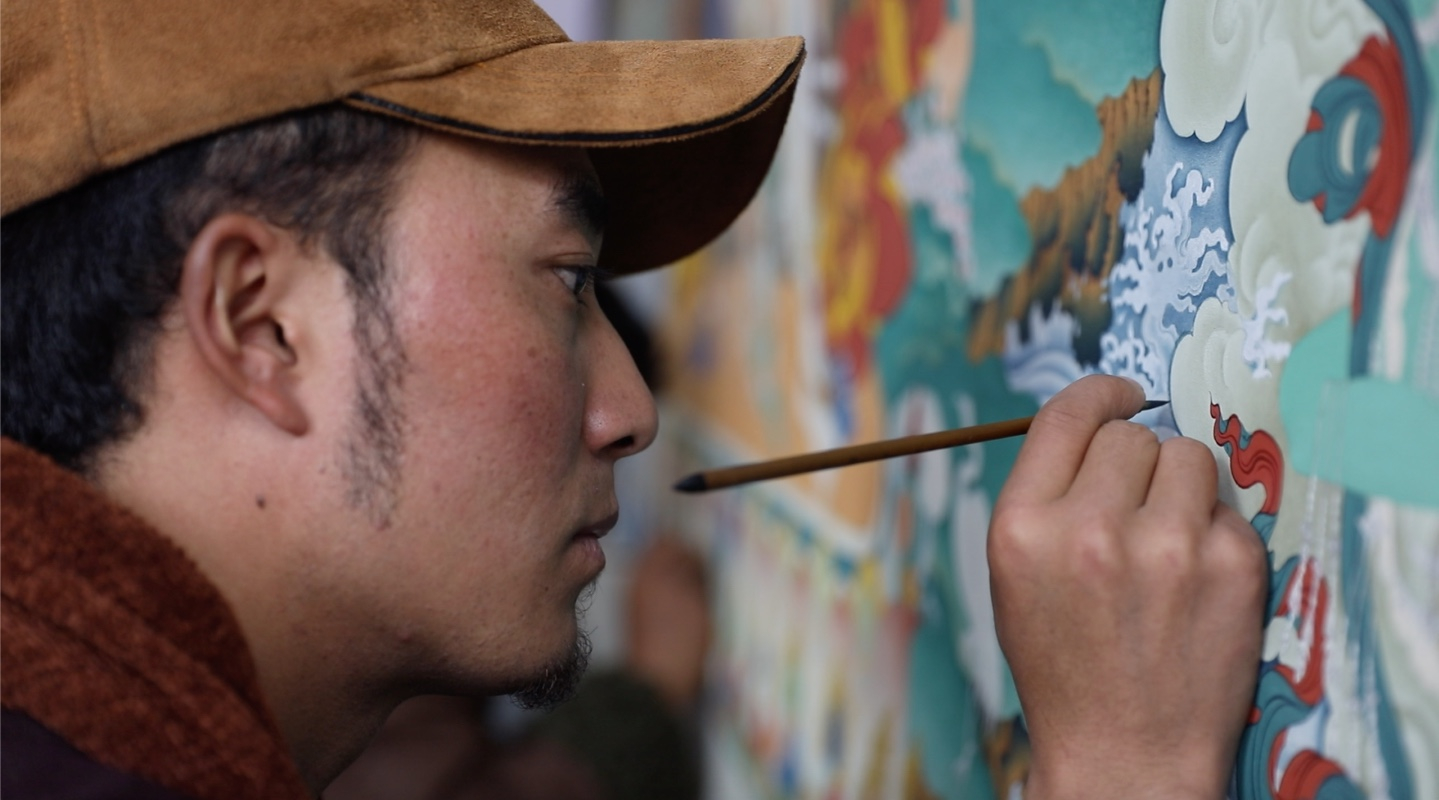
A Tibetan man learns wall painting at a training school in Lhasa. /CGTN Photo
The students are mostly young herdsmen from impoverished families, or people with disabilities. Here they don’t need to pay a penny. Instead, they can get reward after the works they are instructed to create are sold to companies or temples.
Over the years, hundreds of trainees have graduated. Some of them choose to stay in the school as an instructor, while some also set up their own studios in Lhasa or their hometown.
For all cultural heritages, they face the same dilemma - how to maintain their vitality in modern times? So while trying to preserve the traditional craftsmanship, innovation might be the fundamental way out.
This is also what the institution is exploring. For example, it’s collaborating with some fashion designers from big-name brands to innovate traditional Tibetan costumes in an attempt to make them more acceptable to global consumers.
“I think no matter what kind of art form, it will lose its charm or vitality if it deviates from the demands of social development, the market and public aesthetics,” said Song.
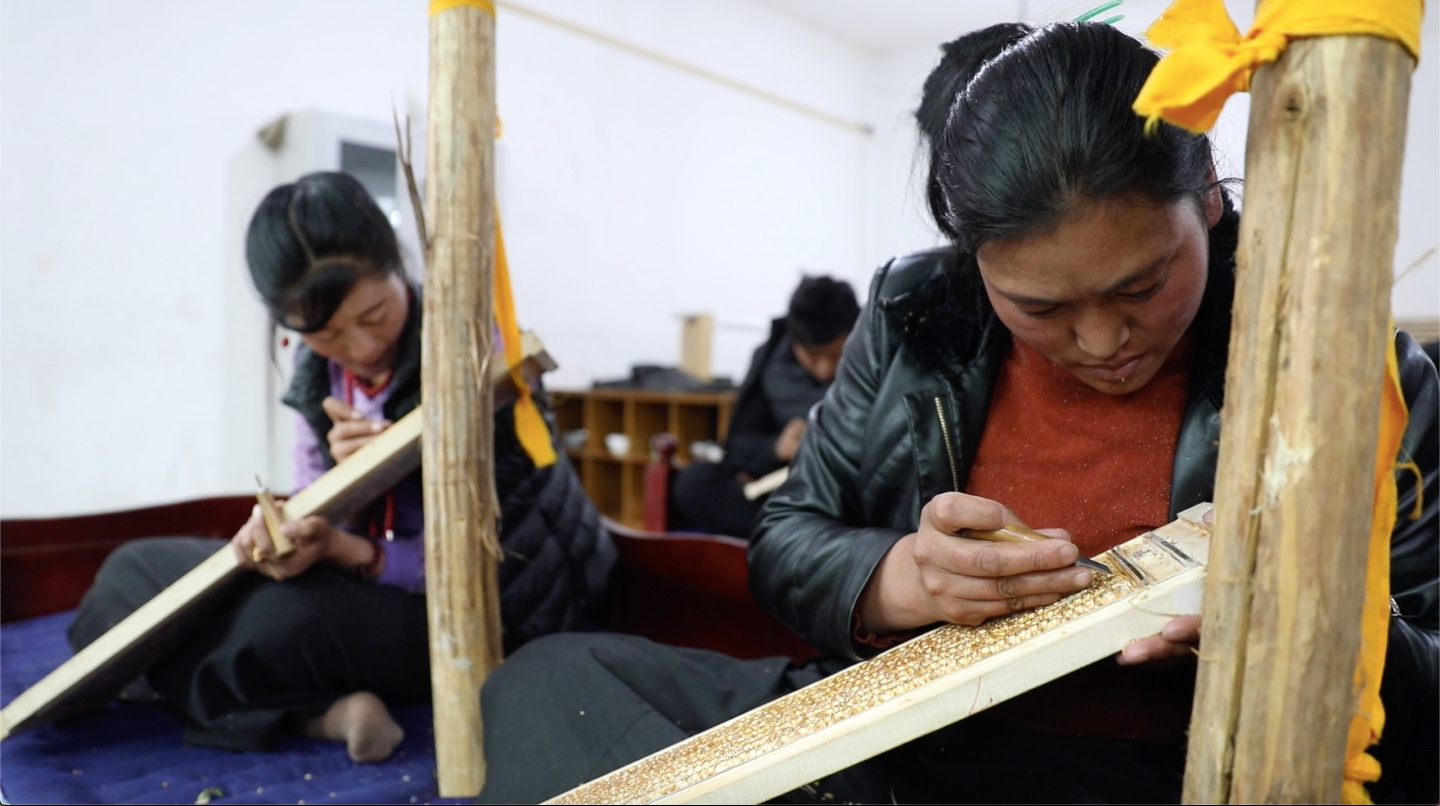
Students at a training school in Lhasa carve out templates for woodblock printing. /CGTN Photo
Encouraged by its positive social influence and economic outlook, the institution is planning to expand.
Actually, Tibet is a region blessed with not only beautiful landscapes, but also abundant traditional cultures. As its economy progresses at a fast pace, the region faces challenges in preserving its valuable traditions.
Local authorities see the training school as a good attempt in protecting valuable Tibetan traditions and provide certain financial support to it. But officials say the undertaking still calls for efforts from more individuals and enterprises.
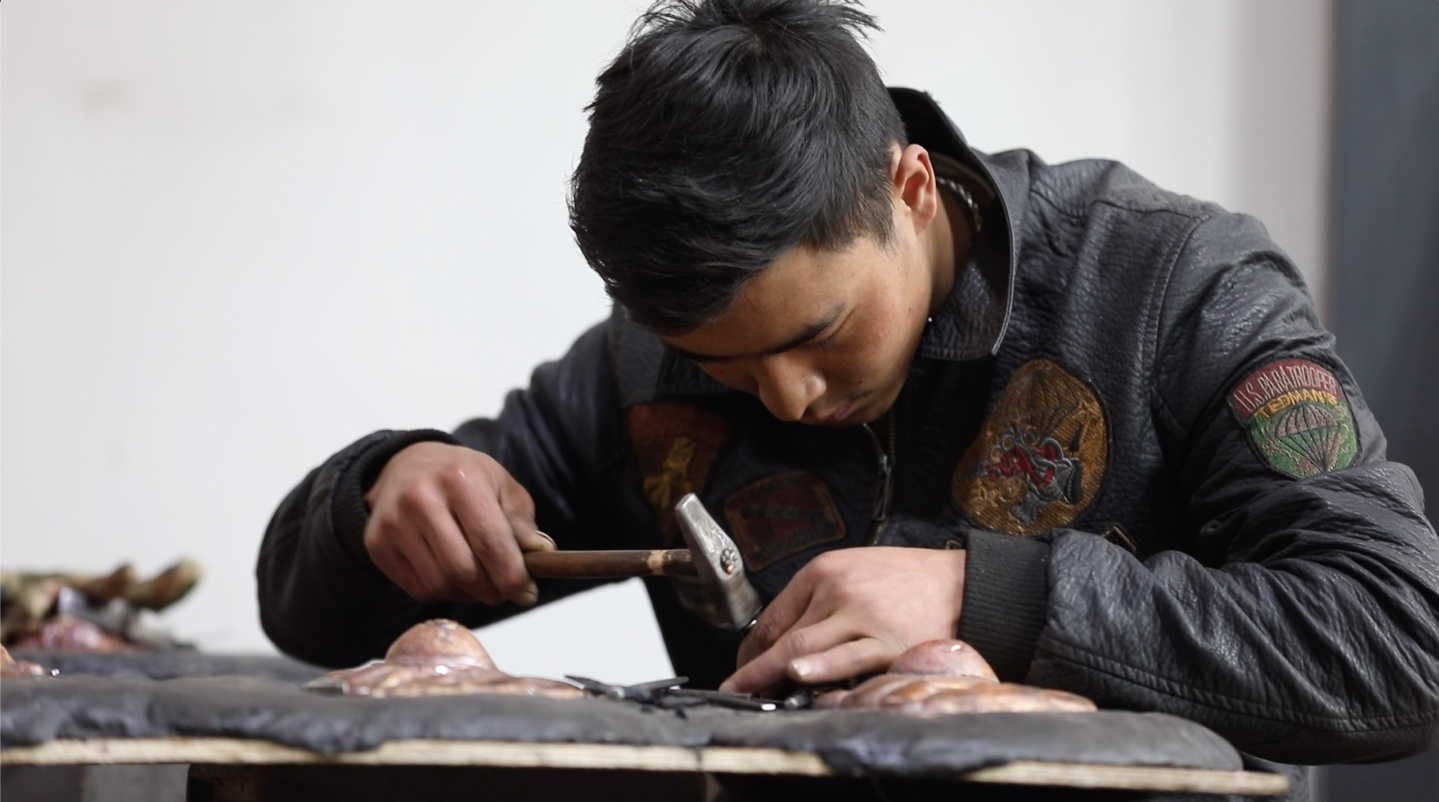
A Tibetan man learns Thangka painting at a training school in Lhasa. /CGTN Photo
Like fellow trainees here, Gangtse has his own long-cherished dream.
“I hope I can open my own studio in Lhasa in the future and teach the craft to more people,” he said.
But it will take seven or eight years before he can master the technique.
(Cover photo: Some young people from across Tibet Autonomous Region learn Thangka painting at a training school in Lhasa. /CGTN Photo)

Copyright © 2018 CGTN. Beijing ICP prepared NO.16065310-3
Copyright © 2018 CGTN. Beijing ICP prepared NO.16065310-3